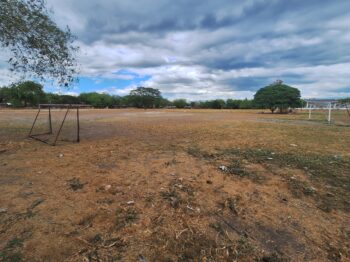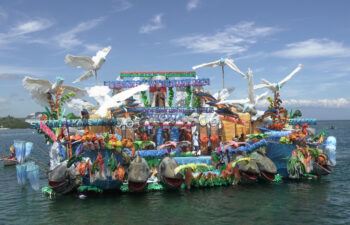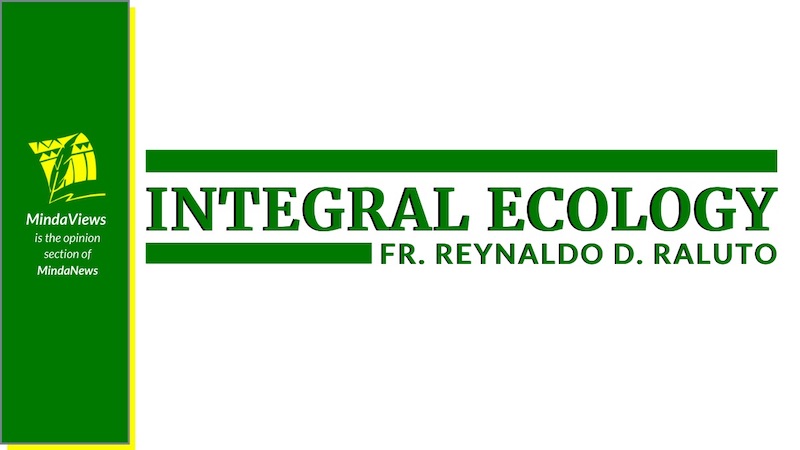
CAGAYAN DE ORO CITY (MinaNews / 05 September) — Since 2015, the Season of Creation is celebrated globally from September 1 to October 4. This year, however, the celebration in the Philippines is extended until October 11, which is the Indigenous Peoples Sunday, to recognize that our care for ecology and concern for the indigenous peoples are interrelated.
The theme for this year’s celebration focuses on the “Jubilee for the Earth.”
To deepen our reflection on this theme, it is appropriate to humbly remember the story of the common origin of all creatures and to firmly hope that all will arrive at the common destiny back to the bosom of the Creator.
The most competent person who could tell us about the new universe story is the American cultural historian Thomas Berry (1914-2009), a Passionist priest who called himself “geologian.” He was influenced by the Jesuit paleontologist and philosopher Pierre Teilhard de Chardin (1881-1955) in formulating his idea of the New Story, particularly his appreciation of the developmental character of the universe. Berry visited Mindanao in the 1980s and spent time with the T’boli community.
The Limitations of the Old Cosmology
Many of the best available ecological insights today can be meaningful only when they are understood in light of the new cosmology or the universe story. This is because ecology presupposes and is based on certain cosmology. As Berry put it, “ecology is a functional cosmology.” An anthropocentric cosmology can promote a human-centered ecology. Thus, for Berry, it is cosmology as such—and not philosophy—that controls the world.[1]
The western tradition that we have inherited from the Greek and Hebrew sources is excessively committed to an anthropocentric cosmology. This can be shown in their low regard for the natural world and in their view of human beings as having dominion over all earthly creatures. As a beneficiary of these ancient sources, western Christianity’s old cosmology is guilty of supporting an anthropocentric perspective that largely contributed to the present ecological crisis.
The Strengths of the New Cosmology
There is a need for a paradigm shift in cosmology if we wish to overcome the limitations of the prevailing anthropocentric ecology. The new understanding of the universe recognizes our kinship with fellow creatures. It tells the story of the emergence of human being as part of the larger story of an evolving universe. In the words of Berry, it reminds us that “every component of the universe is integral with every other member of the universe community.”[2]
To balance the old cosmology’s strong emphasis on human distinction and dominion, the emerging cosmology of the Big bang theory highlights both the common origin and destiny of all human and other creatures. Against the static view of the old cosmology, the new cosmology gives us a picture of a continually expanding and self-organizing universe.
To show the unfinished state of creation and the “developmental character of the universe,” the universe story may be told into four major phases, namely: the galactic story, the Earth story, life story, and the human story.
The Galactic Story
The proponents of the new cosmology do not pretend to know what was there before the start of space and time or what existed before anything else. However, some theologians influenced by Berry, like Leonardo Boff, attempted to describe it in terms of “boundless ocean of seething energy,” “quantum vacuum,” “underlying energy,” “pregnant void,” or “the original source of all being.”[3] In any case, it is beyond the domain of science to see the condition of the original state prior to everything that exists.
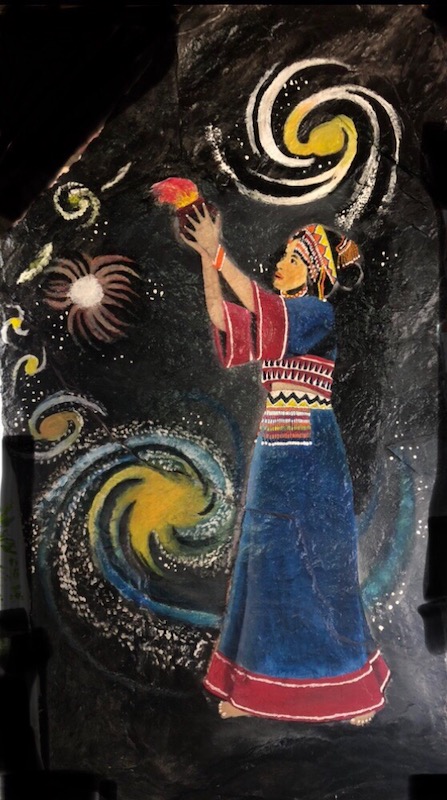
The Big Bang theory tried to reconstruct the evolution of the expanding universe back to a time about 13.7 billion years ago when all energy and matter were still compressed into an inconceivably tiny fireball, having the diameter of 10-33 centimeters and temperature of 1032 degrees centigrade. Its “primordial flaring forth” was responsible for the simultaneous expansion of the visible universe in all directions, like a balloon that inflates from nothing.[4]
Our universe has a self-organizing property that empowers the creativity of evolution powered by the interactive existence of the four types of cosmic “forces” (i.e., the strong nuclear force, the weak nuclear force, the electromagnetic force, and the force of gravity). Thus, 13.3 billion years ago, primal stars appeared. With gravitational force of dark matter, clouds of primal matter collapsed into enormous stars. Stars then consumed themselves to create other heavier elements such as carbon, oxygen, nitrogen and sulphur. These gave birth to galaxies.
The Big bang theory explains that our galaxy, called the Milky Way, is just one of more than 125 billion galaxies that make up the visible universe. It estimates that the Milky Way contains around 200 billion stars and about six billion of these stars are medium-sized stars, like our sun, with their respective planetary systems. Together with other stars, our sun was formed out of the earlier supernova (or luminous star) that exploded about 4.5 billion years ago.
The Earth Story
All the planets of our solar system, including the Earth, were formed out of the same cosmic debris about 4.45 billion years ago. The new cosmology proposes a “planetesimal theory” to explain that the formation of the Earth, including its terrestrial neighbors, began to emerge through the process of random barrage of violent collisions among the wandering cosmic massive bodies that encircled around the sun. Accordingly, the forces of nature facilitated the piecemeal assembly and the creative combination of these “planetesimals” eventually evolved into regular planets and moons.
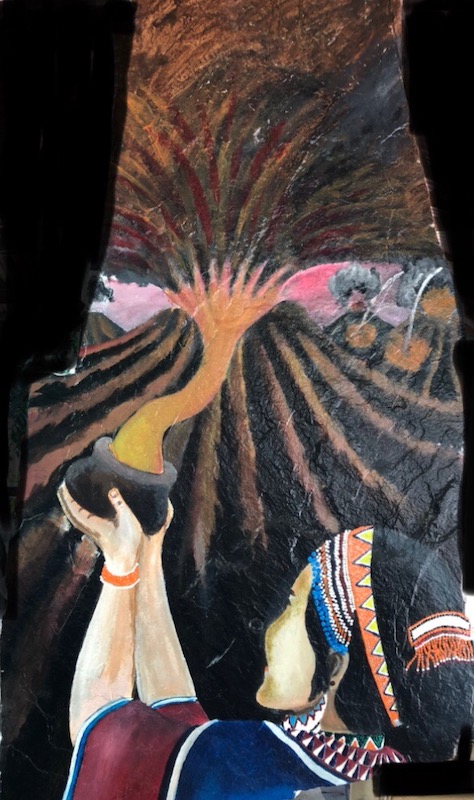
By the force of their massive gravitational interaction, these planets and moons virtually cleared the surroundings of the sun out of the harmful cosmic detritus and ordered them into a solar system. Certainly, the irreversible chain of complicated events from the primordial flaring forth up to the birth of the Earth has prepared the stage for the arrival of life.
The Life Story
All the elements that we consider building blocks of life—except the primordial hydrogen—are inherently found on Earth. The Earth had also benefited from its neighbors’ cosmic elements that were delivered through lightning bolts, comets and meteors strikes, planetoid collisions, and other space detritus bombardments. Many of these moments of violent “assaults” were also thought as nature’s way of delivering tons of amino acids and other organic molecules that were rich in the building blocks of life.
It has been proposed that the first cell appeared some 4 billion years ago on the Earth’s deep ocean floor, where life was to exclusively remain for its 90 per cent of Earth’s history, until it became ready for a terrestrial existence. Since then, the Earth has been in an irreversible stage of giving birth to life, as cells are able to variously reproduce their own copies and to continually evolve in diverse forms of life—from simple to complex.

The Earth is home to about 30 million living species although, so far, only about 1.5 million species have been scientifically identified and classified. Recognizing the “motherly” capacity of the Earth to give birth to various forms of life, it can be said that the Earth is “alive in a super eminent manner.”
The Human Story
After countless attempts to express life to its extreme meaning, it was finally able to produce a life with a mind. It has been proposed that the emergence of intelligent life on Earth began with the advent of complex animal organisms around 550 million years ago. From the animal kingdom, the mammals emerged around 70 million years ago.
Based on the available empirical data, Leonardo Boff followed Berry to reconstruct the emergence of human beings in the evolutionary scene. “Around 75 million years ago, when Europe, North America and Greenland formed a single continent, another chapter of life was written when the first simians,” who evolved into the first primates that appeared around 35 million years ago. “These primates are a common ancestor to both human beings and higher simians.”[5]
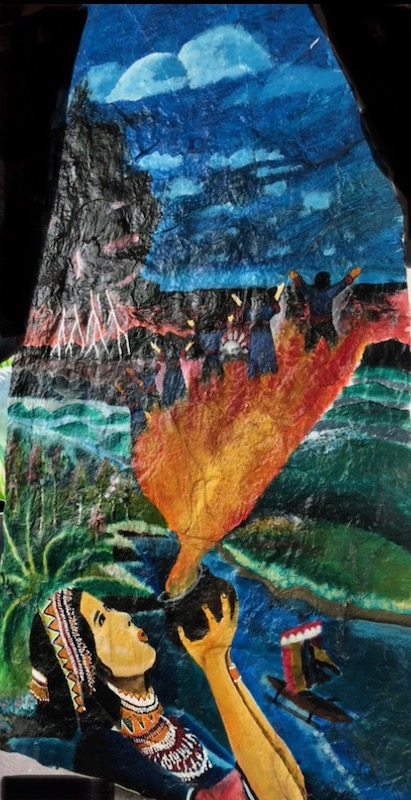
Around seven million years ago, an important evolutionary process occurred when the continents split due to geological accident (known as the Great Rift Valley). As Boff describes, “On the one side chimpanzees and gorillas (who have 99 percent of the genes we have) and on the other side the Australopithecus, which are primates in a process of hominization.”[6] Accordingly, the bones of Australopithecus (a young female—named Lucy—was discovered in 1974 in Ethiopia) that lived around 3 to 4 million years ago already presented humanoid characteristics.
So far, the earliest recorded human species, known as Homo habilis (the “handy or able man”), lived between 2.1 and 1.5 million years ago. The Homo erectus (known as “upright man”) probably lived 1.8 million years ago in Africa. The full-blown human species, known as Homo sapiens (“wise man” or “knowing man”), probably appeared around 200,000 years ago.
The phenomenon of the humans should not be viewed as the end or the terminus of the unfolding story of the universe. The evolution continues because the story of the universe is not yet complete. In the words of Berry, “The period of creation has not been closed; it is still in progress. We are still in the sixth day of creation.”[7] The universe story continues…
(MindaViews is the opinion section of MindaNews. Reynaldo D. Raluto is a Roman Catholic priest of the Diocese of Malaybalay. He is the Academic Dean of St. John Vianney Theological Seminary in Cagayan de Oro where he also teaches fundamental/systematic theology and Catholic social teaching. He is the author of Poverty and Ecology at the Crossroads: An Ecological Theology of Liberation in the Philippine Context (Quezon City: Ateneo de Manila University Press, 2015). His ecological advocacy includes planting/growing Philippine native trees, mountain climbing, and defending the rights of Indigenous Peoples.]
[1] Thomas Berry, The Sacred Universe, edited by Mary Evelyn Tucker (New York: Columbia University Press, 2009), 137-138.
[2] Berry, The Sacred Universe, 86.
[3] See Leonardo Boff, Come, Holy Spirit: Inner Fire, Giver of Life, and Comforter of the Poor (Maryknoll, New York: Orbis, 2015), 56.
[4] See Brian Swimme and Thomas Berry, The Universe Story (New York: Harper Collins Publishers, 1992), 17-29.
[5] Leonardo Boff, Virtues: For Another Possible World (Eugene, OR: Cascade Books, an imprint of Wipf and Stock Publishers, 2011), 23.
[6] Boff, Virtues: For Another Possible World, 24.
[7] Thomas Berry, The Christian Future and the Fate of Earth, edited by Mary Evelyn Tucker and John Grim (Maryknoll, NY: Orbis Books, 2009), 32.



